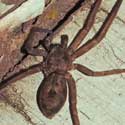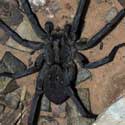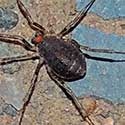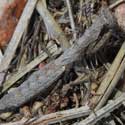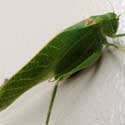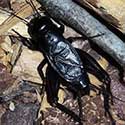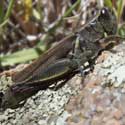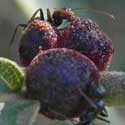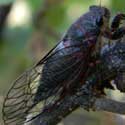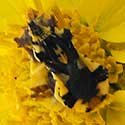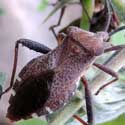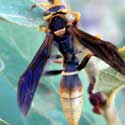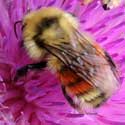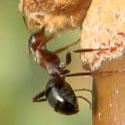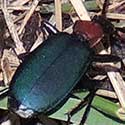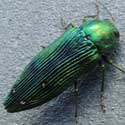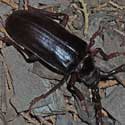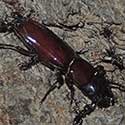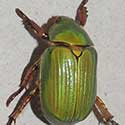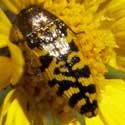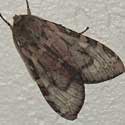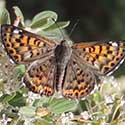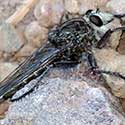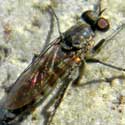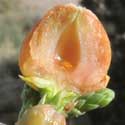Giant Crab Spider
Very large flattened spider and largely light brown in color. Nocturnal roaming hunter often seen climbing walls. More ...
Carolina Wolf Spider
Large spider to be seen at night roaming on ground hunting without a web. More ...
Harvestmen
Ovoid body without clear divisions of head or abdomen. Eight very long spindly legs. More ...
Ground Mantis
Almost impossible to see as it hunts for insects on the forest floor. Up to 20 mm long. More ...
Katydid
Large, mostly green tree-dwelling crickets that are active by night. Males produce clicking sound. Long hair-like antennae. More ...
Field Cricket
In moist meadows and around cabins crickets lull us to rest on warm evenings with their loud chirping song. More ...
Red-legged Grasshopper
A healthy ponderosa woodland will have many species of grasshoppers. More ...
Gall-like Scale
Wine-colored, pea-sized bug with no visible legs, wings or head! Attached to oak tree stems. More ...
Forest Cicada
Makes soft scratchy sounds from high in trees during June. Spends most of life attached to roots under ground. More ...
Ambush Bug
Hides perfectly right at the center of a sunflower disc awaiting a bee to kill and eat! More ...
Leaf-footed Bug
Large, ungainly bugs often in groups and with enlarged hind legs. Feeds on shoots, buds and fruits. More ...
Comanche Paper Wasp
Familiar nests of paper tubes affixed in a sheltered spot. Visits flowers and vegetation. More ...
Hunt's Bumblebee
Large fuzzy bees. This one has patches of rusty brown setae. More ...
Wood Ant
Ubiquitous ants in woodlands and shrublands foraging on trees and foliage. Sprays formic acid in defense. More ...
False Bombidier
Medium-sized, agile ground beetles active on warm summer nights. More ...
Jewel Beetle
Good-sized, metallic emerald green with distinct grooves on elytra. In moist forest zones with douglas fir. More ...
Root Borer
This giant longhorn beetle also occurs in the lower deserts where it's called the Palo Verde Root Borer. More ...
Pole Borer
Solidly built longhorn beetle with shorter legs and antennae. Inhabits rotting pine poles. More ...
Leconte's Chrysina
Bronze and jade jewel scarab. Also found in lower canyons in Rim Country. Emerges after monsoon rains. More ...
Flower Buprestid
Very colorful beetles often seen on flowers in late summer. More ...
Glassywing
Grayish moth with partly transparent wings. Red abdomen flashes when disturbed. More ...
Metal-Mark
A couple of kinds of metalmark butterflies can be found and tend to be bright orange marked with black. More ...
Giant Robberfly
Very large fly that can catch and eat other large flying insects. Often sits on sunny perch. More ...
Stiletto Fly
Long tapered body is the namesake of these non-biting flies. Usully found near water because immatures live in moist sand or rotting wood. More ...
Juniper Bud Gall
The small orange larva at the center belongs to a gall midge, a minute fly. The galls are look like juniper berries. More ...
